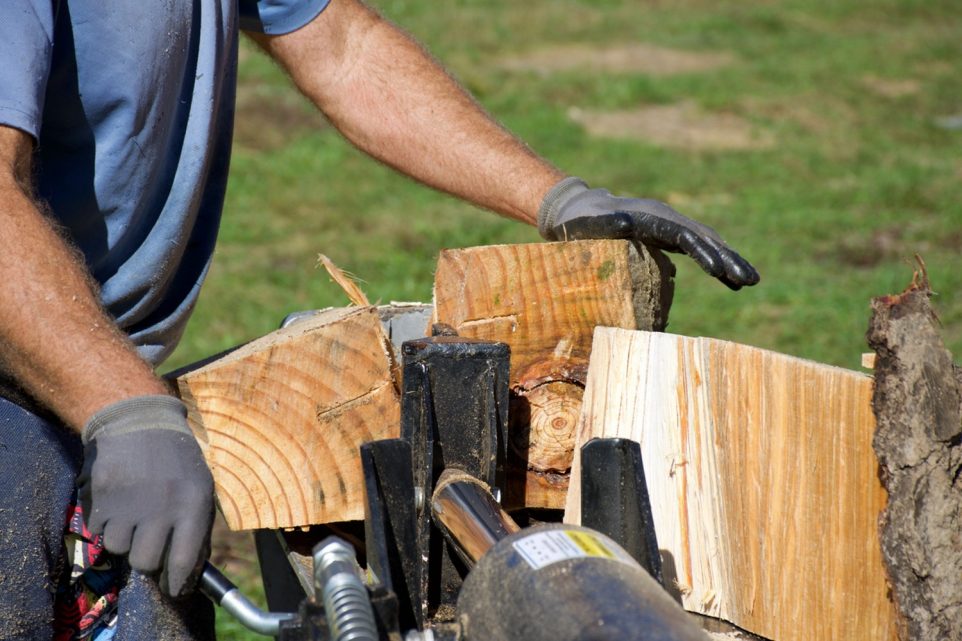Should I Mulch or Split My Wood?

Should I mulch or split my wood? It’s a question that many homeowners and outdoor enthusiasts ponder when faced with a pile of wood. Whether you’re dealing with fallen branches, tree trimmings, or logs for firewood, deciding between mulching or splitting can impact how you use and manage your wood resources.
Both options offer their own unique advantages, but understanding the process and benefits of each can help you make an informed choice. In this guide, we will explore the world of wood management and delve into how to mulch and split wood. So, let’s embark on this journey and discover which path is right for you and your wood!
Mulching Wood
How to Mulch Wood
Mulching wood involves using a wood chipper to turn branches, twigs, and other wood debris into small wood chips. When deciding whether to mulch or split your wood, it’s worth considering using a wood chipper. Electric wood chippers are often preferred for their convenience and ease of use. They are typically quieter, emit no fumes, and require minimal maintenance.
On the other hand, gas wood chippers offer more power and are suitable for large-scale projects. They are often more portable and can handle thicker branches and heavier loads. Choosing between an electric wood chipper and a gas wood chipper depends on your specific needs, the volume of wood you need to process, and the availability of a power source.
Benefits of Wood Mulch
Wood mulch offers several advantages for your garden and landscaping, allowing you to repurpose wood waste, such as fallen branches or tree trimmings, into a valuable resource. It helps retain soil moisture, suppresses weed growth, moderates soil temperature, and improves overall soil health. Plus, it promotes recycling and reduces the need for disposal.
Wood mulch can also enhance the aesthetics of your outdoor space. It is commonly used in landscaping beds, around trees and shrubs, and along garden pathways. It provides a natural and organic look while offering functional benefits. It’s important to note that wood mulch can take time to decompose, so you may need to replenish it periodically. Additionally, certain types of wood chips, such as fresh pine chips, may temporarily lower the soil’s pH level, which may not be suitable for some plants.
Splitting Wood
How to Split Wood
Splitting wood involves using a wood splitter, also known as a log splitter, to divide logs into smaller, more manageable pieces. Electric log splitters are often favored for their ease of use and lower maintenance requirements. They are quieter, emit no fumes, and are generally more environmentally friendly. On the other hand, gas log splitters are known for their power and ability to tackle larger logs and tougher wood varieties. They provide a portable and robust solution for heavy-duty wood-splitting tasks. Ultimately, the choice between an electric log splitter and a gas log splitter depends on your specific needs, the volume of wood you need to split, and the availability of a power source.
Benefits of Split Wood
Splitting wood is commonly done for firewood purposes. By splitting logs, you increase their surface area, which accelerates the drying process and allows for more efficient burning. Split firewood also fits better in stoves, fireplaces, or wood-burning appliances. Smaller pieces are generally more manageable and require less physical effort compared to handling large logs.
So Which One Should You Choose?
Ultimately, deciding to mulch or split your wood depends on your specific needs and preferences. If you’re focused on recycling wood waste, enhancing your garden’s aesthetics, and improving soil health, mulching wood might be the best choice. On the other hand, if you prioritize firewood preparation, ease of handling, and woodworking projects, splitting wood with a log splitter is the way to go. In some cases, it may be advantageous to do both. You can use larger logs for firewood while mulching smaller branches and wood debris. So, whether you choose to mulch or split your wood, both options offer unique benefits. By making an informed decision, you can effectively manage your wood resources and make the most of their potential.